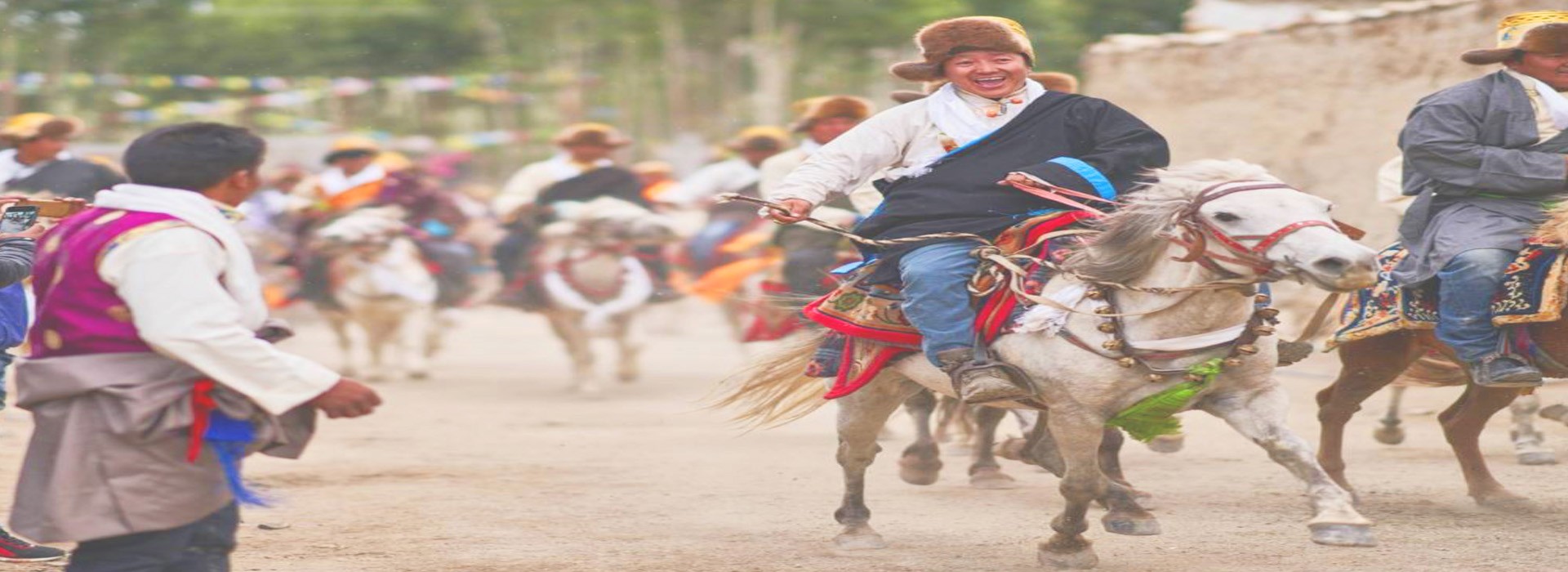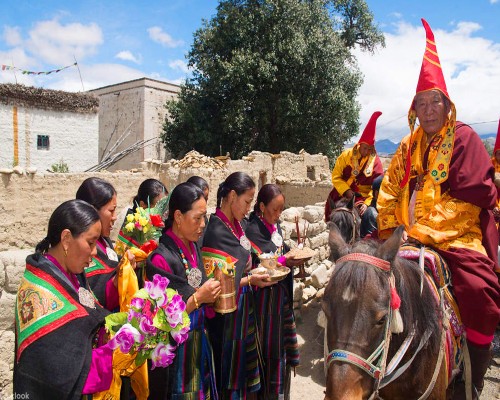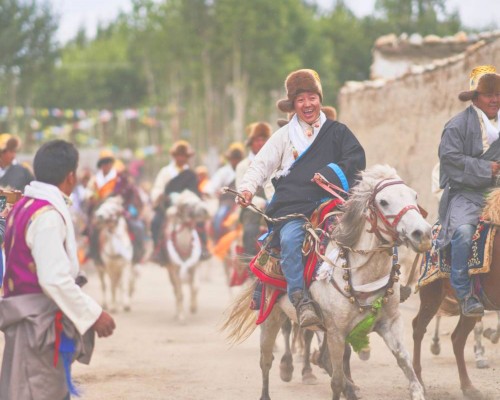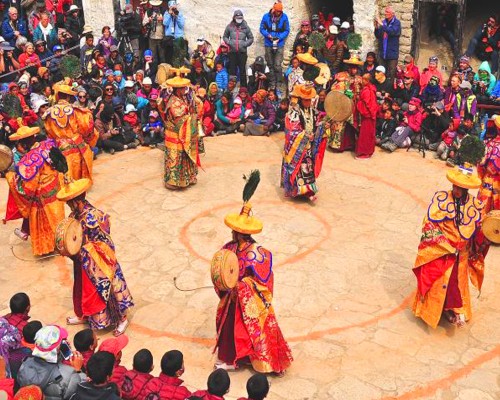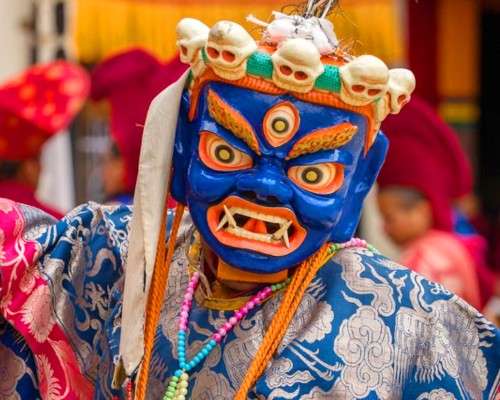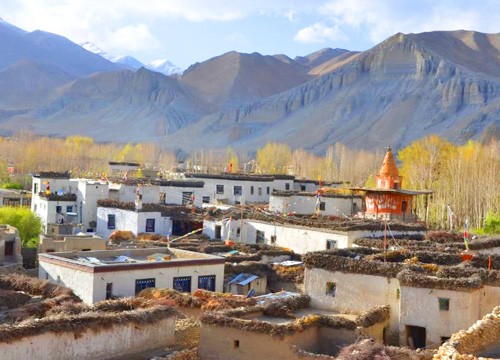The Yartung Festival, held in Upper Mustang, is a stunning three-day horse racing and cultural spectacle that marks the conclusion of the monsoon season and the start of fall. The term, derived from "Yar" (summer) and "Tung" (farewell), dates back centuries and is linked with Buddhist and agrarian traditions.
The Tiji Festival is a lively three-day Buddhist event conducted yearly in Lo Manthang, Upper Mustang. It is rooted in Tibetan mythology, representing the triumph of good over evil and commemorating the legend of Dorje Jono, a deity who struggled to save Mustang from destruction. Tiji holds strong spiritual and cultural significance for the locals, offering blessings of peace, wealth, and protection. It also promotes communal relationships and protects centuries-old traditions through holy dances, chants, and rituals. The festival is critical to preserving the region's distinct Tibetan traditions while also encouraging responsible tourism.
History and Significance
Yartung Festival
The festivities coincide with the full moon in late August, also known as Janai Purnima, and are intended to express appreciation for a successful harvest and promote community wealth.
The first day includes royal and spiritual rites led by local officials and monks. Day two concentrates on prayer routines, while day three explodes with vivid horse races, archery, combat songs, dancing, and communal feasts with traditional chang (barley wine).
In 2025, the Yartung Festival will be celebrated on August, aligning with the full moon. This vibrant festival invites visitors to experience the rich culture of Upper Mustang, particularly in areas like Lo-Manthang, Muktinath, and nearby villages. Highlights include thrilling horse races across the rugged Himalayan landscape, traditional archery, singing, and dancing, as well as sacred blessings at cliffside monasteries. Guests can also enjoy vibrant communal meals and ceremonial feasts that showcase the local hospitality and spiritual heritage. The festival offers an immersive window into Mustang's enduring Tibetan-Buddhist heritage, uniting locals and travelers in celebration of seasons, strength, and spiritual unity.
Tiji Festival
The Tiji celebration, also known as "Tenchi" (short for "Tempa Chirim," which means "prayer for world peace"), is a significant and historic religious celebration held in Nepal's remote Upper Mustang region. This sacred event has profound origins in Tibetan Buddhism, dating back to the 17th century under King Samdup Rabten of Lo Manthang. It was developed to reinforce Buddhist ideas and spiritual practices in the region, and it has since been recognized as an important cultural and religious occasion. Tiji's principal goal is to worship Dorje Jono (also known as Dorje Phurba), a deity who is believed to have destroyed a terrible monster that caused ruin and suffering in Mustang. According to the tale, Dorje Jono freed the area from drought and bad spirits, restoring harmony and balance.
The event takes place over three days in the walled city of Lo Manthang, which was previously the capital of the Kingdom of Lo. During Tiji, monks from Choede Monastery, the region's biggest monastery, perform colorful masked dances and intricate rituals. These dances, called as "Tsa Chham" and "Ngachham," symbolize the conflict between Dorje Jono and the demon, demonstrating the triumph of good over evil. The dances are highly symbolic, with precise choreography passed down through generations, and serve as a visual depiction of Vajrayana Buddhism's spiritual teachings.
The Tiji Festival in Upper Mustang is normally held in May, according to the Tibetan lunar calendar, which corresponds to the third month of the Buddhist calendar. The exact dates alter each year, as determined by the lamas of Lo Manthang's Choede Monastery. The festival lasts three days and is widely celebrated in the old walled city of Lo Manthang, Upper Mustang's cultural hub. The festival's major events include sacred Cham dances, religious ceremonies, and storytelling performances that reenact the myth of Dorje Jono, the deity who conquered evil and restored peace to the region. On the first day, monks perform a series of traditional dances dressed in ornate masks and colorful robes to symbolize gods and demons, setting the spiritual tone for the festival. On the second day, the metaphorical struggle between Dorje Jono and the devil continues, with performers demonstrating fierce and dramatic motions. The final day culminates with the ritual defeat and expulsion of the demon through an effigy that is symbolically destroyed, marking the triumph of good over evil.

